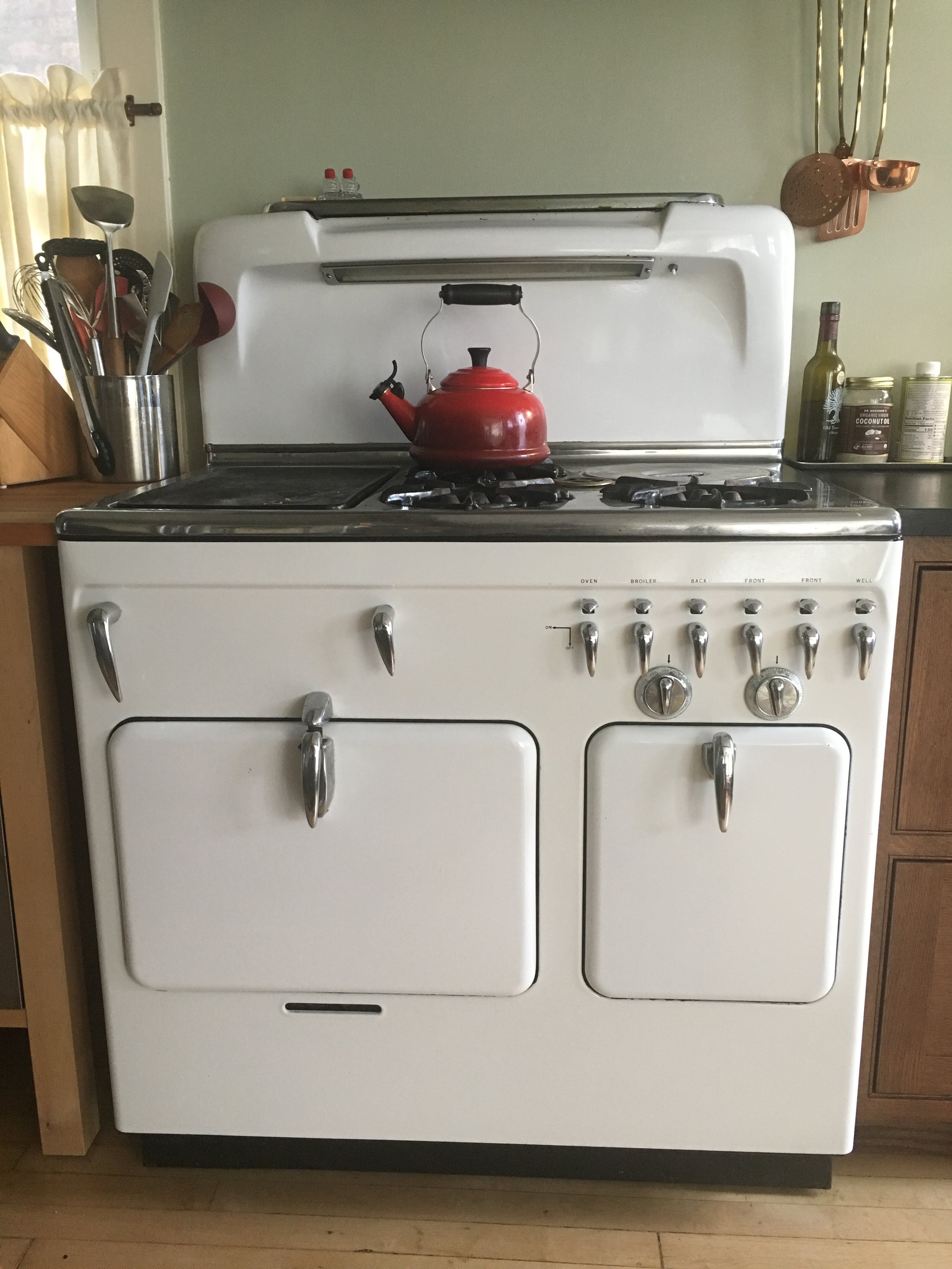The pandemic lockdown had been going on for months and my wife, son and I had been fairly adventurous in cooking. I forget what exactly inspired us to make our own French fries, except that we were fixing on making cheeseburgers, with some talk of French fries that caused me to remember the vintage Dormeyer Fri-Well deep fryer I had picked up not so long ago and never used. Well, here was the perfect opportunity to try it out. Our 19 year old who’d been home from college since spring break was into it, and it was a plus that we’ve had a nifty little vintage French fry cutter we hadn’t used for a decade. The only potatoes we had were Yukon golds, which seemed perfectly sized for the cutter.
As I plugged in the Fri-Well and looked at it sitting on the countertop next to the Chambers, some instinct told me that it just seemed a little risky. Could it have been Chef Dormeyer’s demonic red eyes? Whatever it was, that same “something” told me that putting it within the broiler space of the Chambers might just be a safer alternative.
On digging out the Fri-Well, we were thrilled that we actually had the owners manual, because of course, without it we’d be clueless about what to do. Yet speaking of clueless, for some insane reason I immediately began discounting what it was saying. One can of Crisco? When melted, the fryer was only one third full. The manual also said to cover the bottom of the basket with only a single layer of potatoes. What the heck? We were getting hungry and excited about this whole idea. With so few spuds and so little oil, it seemed it would take forever to cook enough fries for the three of us. That would never do, so I made the executive decision to add another can of Crisco. While the white lumps turned to hot clear liquid inside the fryer, we covered the bottom of the basket with a layer of potatoes alright, only this layer was three deep.
From my days as a grip in the film production business, I have a saying: We’ll find out later why this seemingly brilliant idea is really a rather horrible one.
With the temperature of the grease at 450, it was time to cook. Immediately after our son dropped the basket into the fryer, all hell broke loose. Imagine your vinegar and baking soda volcano experiment from grade school and, you’ve got a pretty accurate idea of just what happened, only ours was a foaming fountain of super-heated grease! As much as our instincts wanted to contain it, thank God we attempted nothing of the sort. AND, thank God again, the molten Crisco flowed down the sides of the deep fryer and harmlessly – magically - into the enameled box of the Chambers broiler (instead of onto the countertop, and splashing onto the floor and most likely onto our feet). Finally, thinking clearly, I lifted the basket from the fryer and the eruption ceased.
Everything turned out fine in the end: no one got hurt, the cleanup was rather minimal, and the fries – they turned out dang tasty. We did try again just a few weeks later, and I gotta say, they weren’t nearly as good as that first night. Might have something to do with a saying I’ve heard about how the spice of danger gives extra flavor to life. That’s fine: we’re sticking to reading (and obeying) the deep fryer’s instructions from now on, and getting our excitement like most normal people do nowadays, from Netflix.
Lessons:
Whenever boiling hot oil is involved, hungry male operators of any age are not to be trusted. Any post-pubescent female must be consulted for the final say.
As a corollary, the deep fryer’s owners manual is to be respected, not ignored. As a matter of fact… it should be followed to the letter.
A Chambers is a fantastic stove, as we know, but now what makes it even more useful and lovable is that the “In A Top” Griddle and Broiler is a fantastic spot to place a deep fryer, should anything go wrong.
PS: Some may wonder “Why not use the Chambers’ Thermo-Well for deep frying?” Simply because the presence of the burner flame at the bottom of the Thermo-Well would easily ignite any hot oil flowing over the side of the pot in a boil-over.
















